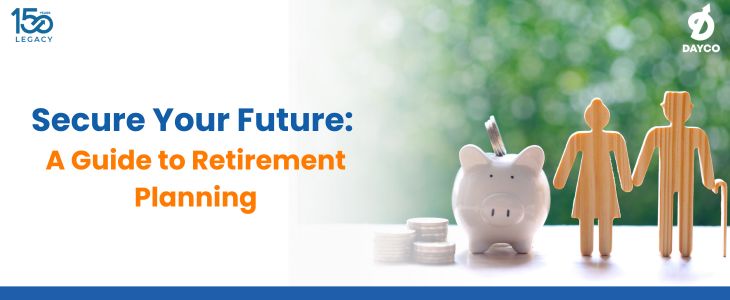Building a Secure Retirement A Guide to Effective Retirement Planning
![]() December 20, 2024
December 20, 2024
![]() 0 Comments
0 Comments
Retirement is a phase of life that most of us dream about, imagining a time free from the daily grind of work, where we can enjoy our golden years. However, achieving a financially secure retirement requires careful planning, especially in India, where government-sponsored social security systems are minimal, and the burden of retirement savings falls largely on the individual. If you haven’t yet planned for your retirement, this guide will help you understand how to build a strong retirement portfolio.
Why Retirement Planning is Essential in India
In India, the average life expectancy is increasing, meaning more years of post-retirement life. While this is a positive development, it also means that your retirement corpus needs to last longer than ever before. With inflation eroding purchasing power and rising healthcare costs, the financial pressures on retirees are significant.
Without adequate planning, you could find yourself struggling to maintain your lifestyle, relying on children or others for support. A well-structured retirement plan ensures that you can retire with dignity, financial independence, and the freedom to live the life you want.
Steps to Build a Strong Retirement Plan
Determine Your Retirement Goals and Needs
Establishing a clear goal is fundamental to successful investment planning. The purpose and timing of the funds should be well-defined, as they are key components in shaping your financial strategy. Without clarity on these factors, it becomes impossible to make meaningful decisions about returns, risks, and investment products. While goals like retirement planning may appear simple, they are dynamic and must adapt to shifting needs and aspirations over time. Therefore, it is essential to view retirement planning not as a one-time task, but as an ongoing process that should be revisited regularly to stay aligned with your evolving financial goals. Some important questions to ask yourself include:
- When do you want to retire? (Typically, the retirement age is between 55 and 65)
- What kind of lifestyle do you envision? Do you want to travel, pursue hobbies, or relocate?
- What part of your current monthly expenses will be seen in retirement?
- Will you need to support dependents?
Once you have a clear idea of your goals, it becomes easier to calculate how much you’ll need to save.
Inflation, Returns, and Asset Allocation
Inflation directly impacts the purchasing power of your retirement savings. In India, long-term inflation has historically been around 5%. To counteract inflation, your portfolio must generate a return that at least matches or exceeds it. Setting a realistic target return after tax is crucial: aiming too low increases the required investment, while overly optimistic targets might fall short. Assuming an average pre-retirement inflation rate of 6% and post-retirement inflation rate of 5%, setting a portfolio return target of 10-12% (approx)is prudent.
An effective asset allocation strategy combines different asset classes to achieve the desired return while managing risk. This allocation is also based on your retirement years and risk tolerance. For instance, you start with a mix of 60% equity and 40% fixed income. Given that fixed-income returns could average around 6% (approx)post-tax (in most cases), and equity returns approximately 12% (be careful, nothing is a given here)pre-retirement and approximately 7% post-retirement, this mix aims to yield an overall 9.5% return. However, this here is your initial asset allocation and you should have an asset allocation plan— which is a plan that outlines how you will be derisking your asset allocation towards debt from equity in each year up to retirement to ensure that as you near retirement, your portfolio is optimised for stability.
Estimate Your Retirement Corpus
Next step is calculating how much you should roughly save up for retirement. Calculate the inflation adjusted value of your current projected annual expenses on the date of your retirement. This will be your expenses in the first year of retirement and you have to inflate this further for all the years you will be in retirement. Here you will have to assume the number of years you expect to live – your life expectancy. The present value of all those annual expenses at your retirement age is your retirement corpus. You can do this calculation very easily by using this retirement calculator.
- Calculate your retirement corpus
- Calculate how much do you need to save for achieving your retirement corpus
Choose the Right Investment Instruments
There are various investment options available in India for building a retirement corpus. several investment instruments are available for retirement planning, each catering to different asset classes. For equity exposure, options like mutual funds, Equity ETFs, Index funds, and direct stocks can be considered. On the fixed income side, instruments like the Public Provident Fund (PPF), Employee Provident Fund (EPF), VPF, National Pension System (NPS) (NPS also has equity exposure), and fixed deposits can be considered. Additionally, gold serves as an effective hedge against inflation and economic uncertainty, offering a layer of security to the overall portfolio. Gold exposure can be taken through Gold ETFs and gold mutual funds.
Review and Adjust Your Plan Regularly
Retirement planning isn’t a one-time activity. It’s important to review your plan periodically—at least once a year. Changes in your personal circumstances (such as a promotion, childbirth, or major medical expenses) or economic conditions (such as inflation or interest rate changes) might require you to adjust your retirement strategy.
As you approach retirement, gradually shift your portfolio from higher-risk investments like equity to safer debt instruments to preserve capital. As mentioned earlier in the asset allocation point, this process, known as portfolio rebalancing, is crucial to ensuring that market volatility doesn’t erode your savings right before you retire.
The Time to Plan is Now
Retirement planning is not just about saving; it’s about making smart investment choices that allow your money to grow over time. The earlier you start, the more financially secure your future will be. By setting clear retirement goals, choosing the right investment options, and regularly reviewing your progress, you can build a retirement corpus that allows you to enjoy your golden years without financial stress.
Remember, retirement is a long-term goal that requires patience, discipline, and consistent effort. Start today, and give yourself the best chance to retire comfortably!
-Nischay Avichal
Share With
I'm a cool paragraph that lives inside of an even cooler modal. Wins!
Are you sure?
In case you didnt know, you can open your account online within 24 hours. Offline account opening takes up to 4 working days. If you wish to open your account offline, fill and sign the forms using a black/blue ballpoint pen. Please fill in the email and mobile number of the applicant to avoid account opening delays.
Enter Password
Please enter your details and password
New to Dayco?
Enter Password
Please enter your details and password
New to Dayco?
Filing Complaints on SCORES (SEBI) – Easy & Quick
- Register on SCORES Portal (SEBI)
- Mandatory details for filing complaints on SCORES:
- Name, PAN, Address, Mobile Number, E-mail ID
- Benifits:
- Effective Communication
- Speedy redressal of the grievances
Thanks !!
Your details were successfully received.

Thank you for Your Feedback!
Our Team is working constantly on improving our user experience and your feedback really means a lot.
Thanks !!
App Link Send to your mobile number successfully.
Thank You
All your Questions have been recorded
Thank You
All your Questions have been recorded
Thank You!
Thank you for your response. We'll get in touch with you at the earlisest for your investment planning needs
NEXT
Thank You!
Thank You for your interest in our Moderate Equity Portfolio. Please find below the credentials to track this portfolio:
User ID: mockmod@daycoindia.com
Password: abcd@1234
Portfolio Tracker
Please Read!
Risk profiling is crucial for identifying and managing potential risks in investment decisions. Please carry out your risk profiling before making any investment decisions.
Complete Risk Assessment Now
Thank You !!
Please enter your details to download/print the report
Thank You !!
Please enter your details to download/print the report
Thank You !!
Please enter your details to download/print the report
Thank You !!
Please enter your details to download/print the report
Thank You !!
Please enter your details to download/print the report
Set Your Goal
Please Select an option from below
Set Your Goal
Please Select an option from below
Thanks You !
We appreciate your interest in our services. Our team will be in touch with you shortly.
CloseSet your Goal
Please enter your details in the fields provided
Thanks You!!
Calculation report has been sent to your mail id successfully
Clear form?
This will remove your answers from all questions and cannot be undone.



 Book Appointment
Book Appointment









Leave a Reply